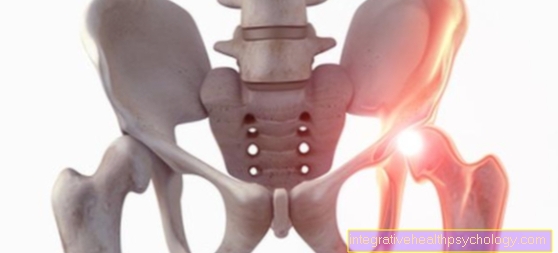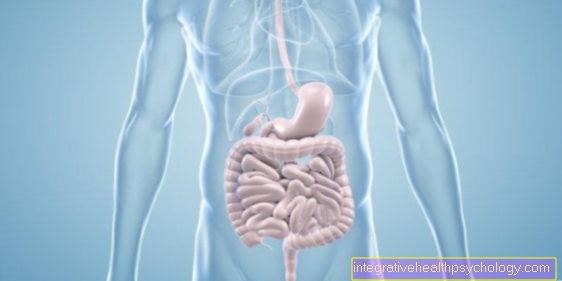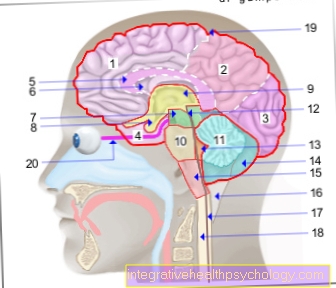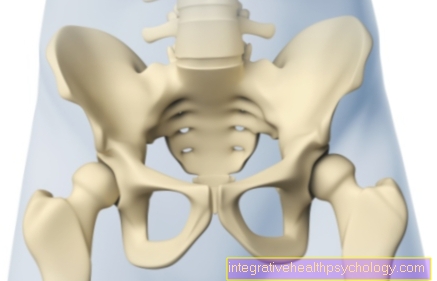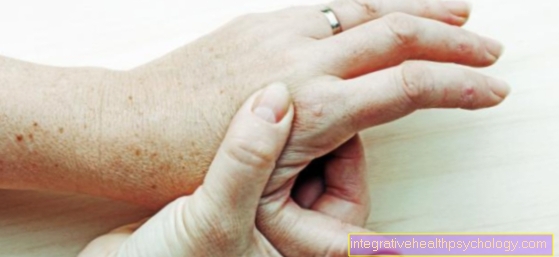ACTH
definition
ACTH is short for Adrenocorticotropic Hormone. This hormone is made in the pituitary gland and released into the blood. The release of ACTH controls the production and release of cortisone in the adrenal cortex. The insulin release is also influenced by ACTH.
During the day, the ACTH level in the blood changes. This is called the circadian rhythm. Various environmental influences, such as temperature, can influence production. The ACTH level in the blood can be changed in various diseases and this has serious consequences for the whole body.

The role of ACTH
The adrenocorticotropic hormone from the adenohypophysis belongs to the hypothalamic-pituitary-adrenal axis. The hypothalamus is an important area in the brain that controls numerous body functions. The pituitary is a hormonal gland that controls the hormonal balance.First, a hormone is released in the hypothalamus, which triggers the release of ACTH in the pituitary gland and this then gets into the adrenal cortex and stimulates the release of the hormone cortisol.
Cortisol has many effects in the body. In the liver, cortisol leads to the production of sugar, the gluconeogenesis, and the storage of this sugar as an energy reserve. In the arms and legs, cortisol leads to a breakdown of fat because this fat is used to provide energy. Cortisol also increases blood pressure. Muscle tissue is more likely to break down and bones are also broken down. Cortisol also has an immunosuppressive effect. This means that the production of ACTH leads to a weakening of the body's defenses via cortisol.
If there is too much cortisol, this leads to feedback and the body produces less ACTH and consequently less cortisol is released. Hormones, such as cortisol, can also be used as drugs to target other hormone levels, such as ACTH.
Read more about the topic here: The effects of cortisone.
The functional cycle
Different hormones can influence each other and inhibit or stimulate production. These systems are closely coordinated. ACTH is a part of the hypothalamic-pituitary-adrenal axis.
The hypothalamus (the superordinate control center of the brain) produces CRH, which enters the pituitary gland (hormonal gland). ACTH is then produced there and released into the blood. When the ACTH reaches the adrenal cortex, cortisol is released there. However, if too large amounts of ACTH are returned to the hypothalamus, the production of CRH and all subsequent hormones will be inhibited. Cortisol can also affect the other steps. When cortisol levels are too high, less CRH and less ACTH are produced.
However, the payout of the individual steps also depends on external factors. First of all, the production runs according to a circadian rhythm. This means that depending on the time of day, in a 24-hour rhythm, different amounts of hormones are released. The temperature or physical or psychological stress can also regulate the release of hormones. Therefore, people who are permanently under stress have higher cortisol levels and a weaker body's own defense system.
Also read the article: Adrenal hormones.
The stimulation test
During the stimulation test, the doctor tries to find out whether what is known as primary adrenal hypofunction is present. The test is carried out on an empty patient and the person concerned should lie quietly in bed during this time.
First of all, the patient's cortisol level is determined. Then an artificially produced ACTH is injected directly into the blood through a venous access. The doctor simulates an increased release of ACTH and gives the adrenal cortex the command to release more cortisol. As expected, a healthy adrenal gland would now release cortisol. Samples are taken again after half an hour and a full hour and the cortisol level is determined.
In the absence of an increase, a primary adrenal hypofunction or a long-standing secondary adrenal hypofunction can be assumed.
The test can cause hypersensitivity reactions and cause skin reactions, dizziness, nausea, vomiting and itching. In the event of an acute allergic shock, countermeasures must be taken immediately.
Find out all about the topics here:
- primary adrenal insufficiency
- secondary adrenal insufficiency
ACTH normal values
Normal values for laboratory values are always only statistically determined values. A slight deviation therefore does not have to have a disease value.
Since ACTH is subject to a circadian rhythm, the values vary depending on the time. Between eight and ten o'clock the normal value is between 10 and 60 pg / ml. In the evening around 9 p.m. the value is between 3 and 30 pg / ml.
During the stimulation test, the value should increase by at least 70 pg / ml or increase to at least 200 pg / ml.
The Consequences of ACTH Deficiency
ACTH deficiency can result from an underactive pituitary gland or hypothalamus. The consequence is also a lowered cortisol level. Those affected accordingly suffer from the consequences of the cortisol deficiency.
These include fatigue, lack of energy and weight loss through to anorexia. Those affected also describe muscle and joint pain. Fever and anemia may occur. Children in particular often have hypoglycaemia due to a lack of cortisol.
In many cases, there is also a low blood pressure, which falls further with a sudden change in position. Women often suffer from dry, itchy skin and loss of pubic hair. The skin of those affected appears alabaster-colored. The combination of these symptoms is also called Addison's disease.
An Addison's crisis can also be triggered if those affected take cortisol continuously and it is suddenly stopped. The symptoms of primary adrenal hypofunction can be slightly different. In this case, however, the ACTH values are in the normal range and only the cortisol level is lowered.
Read more about the topic here: Addison's disease.
The consequences of an increase in ACTH
An increased ACTH release leads to an increased cortisol release. This in turn triggers Cushing's disease. The cause of increased ACTH production is often a tumor in the pituitary gland.
Affected suffer from a changed fat distribution. As the limbs thin, those affected gain weight in the trunk and head. This is also called trunk obesity. The neck throws up a fold of fat, which is called the buffalo neck, and the face becomes plump. The skin becomes thinner and more sensitive, which leads to increased stretch marks, bruises and acne. Osteoporosis develops in adults and stunted growth occurs in children. High blood pressure and atherosclerosis (calcification of the vessels) and edema are also typical. Those affected develop secondary diabetes mellitus as glucose tolerance decreases.
In some cases, there is a loss of libido and a lack of menstrual bleeding. Affected people are also quickly irritable and can also develop depression. In severe cases, paranoid psychosis also occurs. Due to the immunosuppressive effect of cortisol, those affected are very susceptible to infections. The likelihood of deep vein thrombosis and pulmonary embolism also increases.
More information on the topic Cushing's disease you'll find here.
ACTH-associated diseases
The diseases associated with ACTH almost all relate to a deficiency or an overproduction of the hormone. Various tumors in the pituitary gland (superordinate control center of the brain) or in the hypothalamus (endocrine gland) can increase or decrease the production of ACTH. The hormone-producing cells in a tumor can no longer be influenced by the negative feedback and the hormone levels continue to increase.
Increased production can lead to Cushing's disease, diabetes mellitus and high blood pressure. Reduced production leads to an underactive adrenal cortex. Most of the symptoms can be attributed to the cortisol deficiency, but the adrenal cortex also produces other hormones, such as sex hormones and hormones for the body's salt and water balance. ACTH therefore acts on the whole body via the adrenal gland and can trigger a variety of diseases.
Various other diseases can also be the cause of reduced ACTH production. These include tuberculosis, Waterhouse-Friedrichsen syndrome, HIV and many other diseases.
Find out more about the topic here: Pituitary tumor.
ACTH for stress
Although the main contributor to ACTH release is CRH from the hypothalamus (the superordinate control center of the brain), there are other factors.
With long-term stress, the production of ACTH increases significantly. The permanently increased levels lead to an increased susceptibility to infections and fatigue via the cortisol. This is one of the reasons chronic stress can make you sick.
In the case of short-term stress, ACTH is hardly changed and more adrenaline and noradrenaline are released, which are only short-acting stress hormones.
Also read the article: The consequences of stress.





